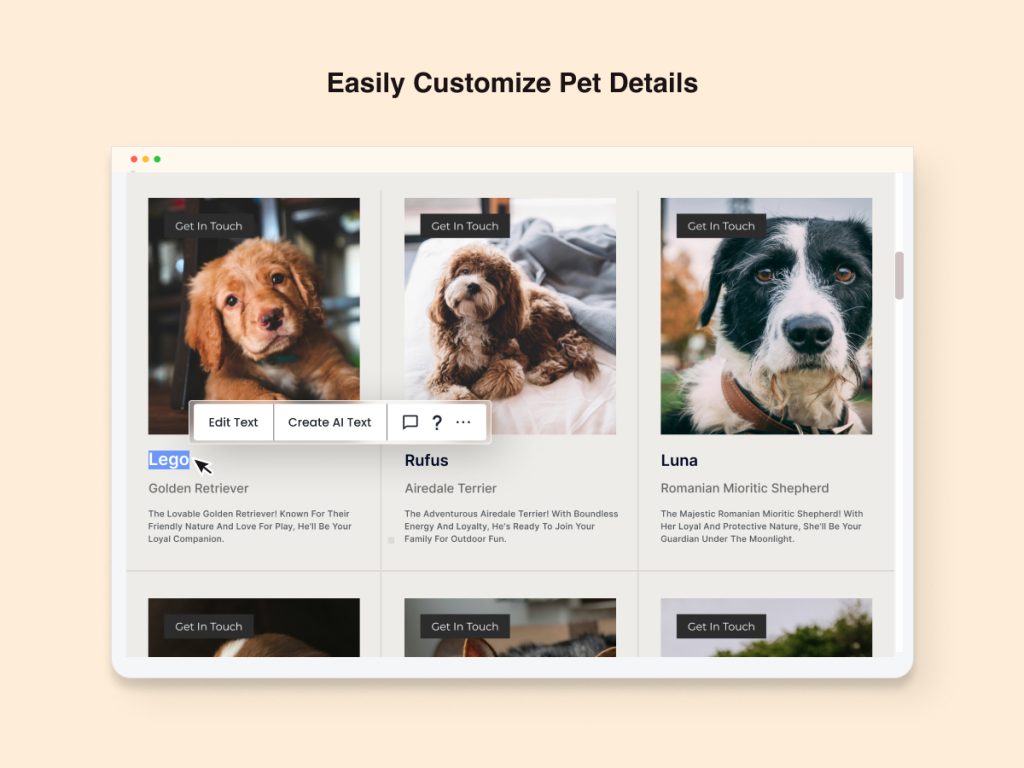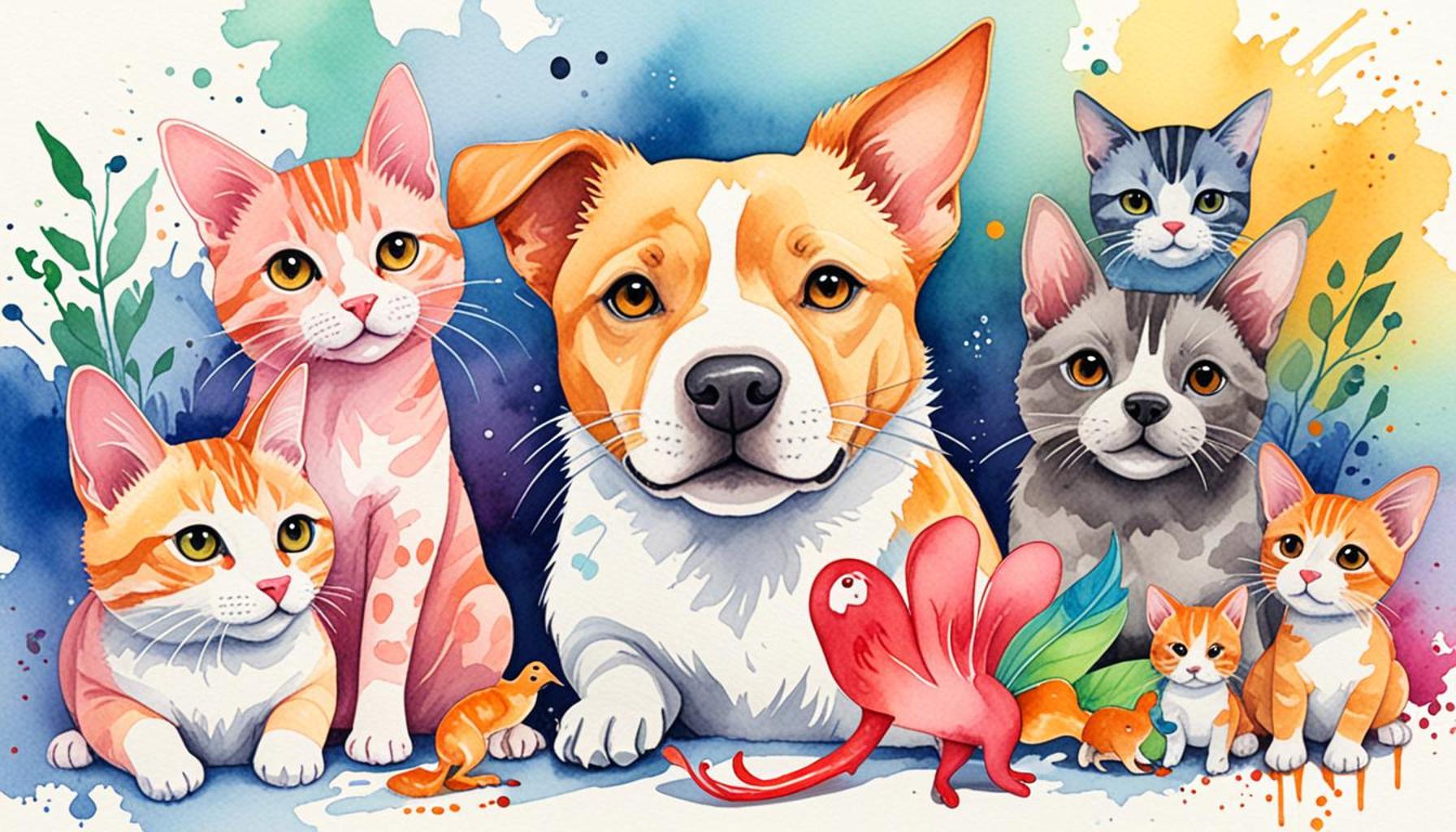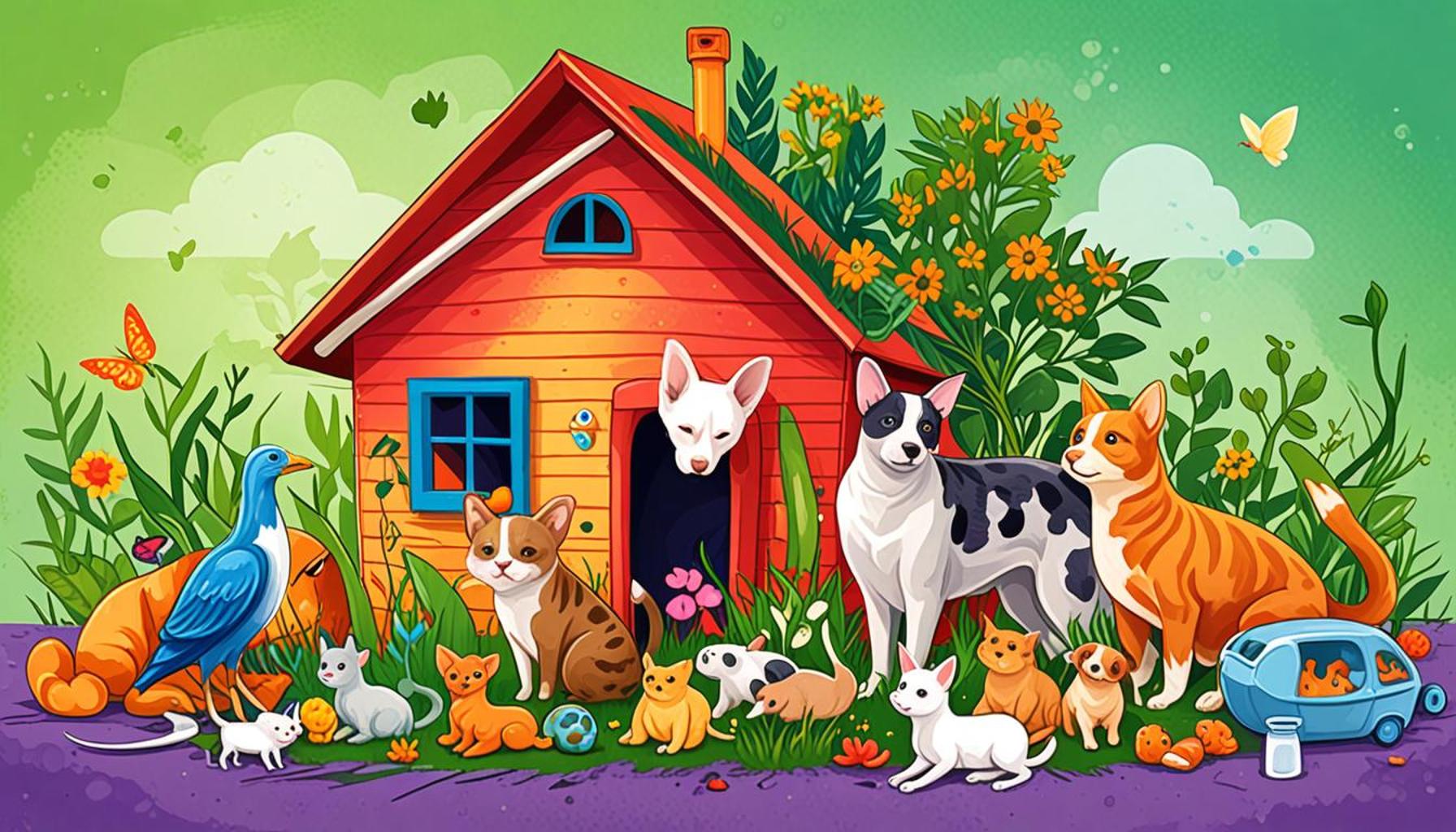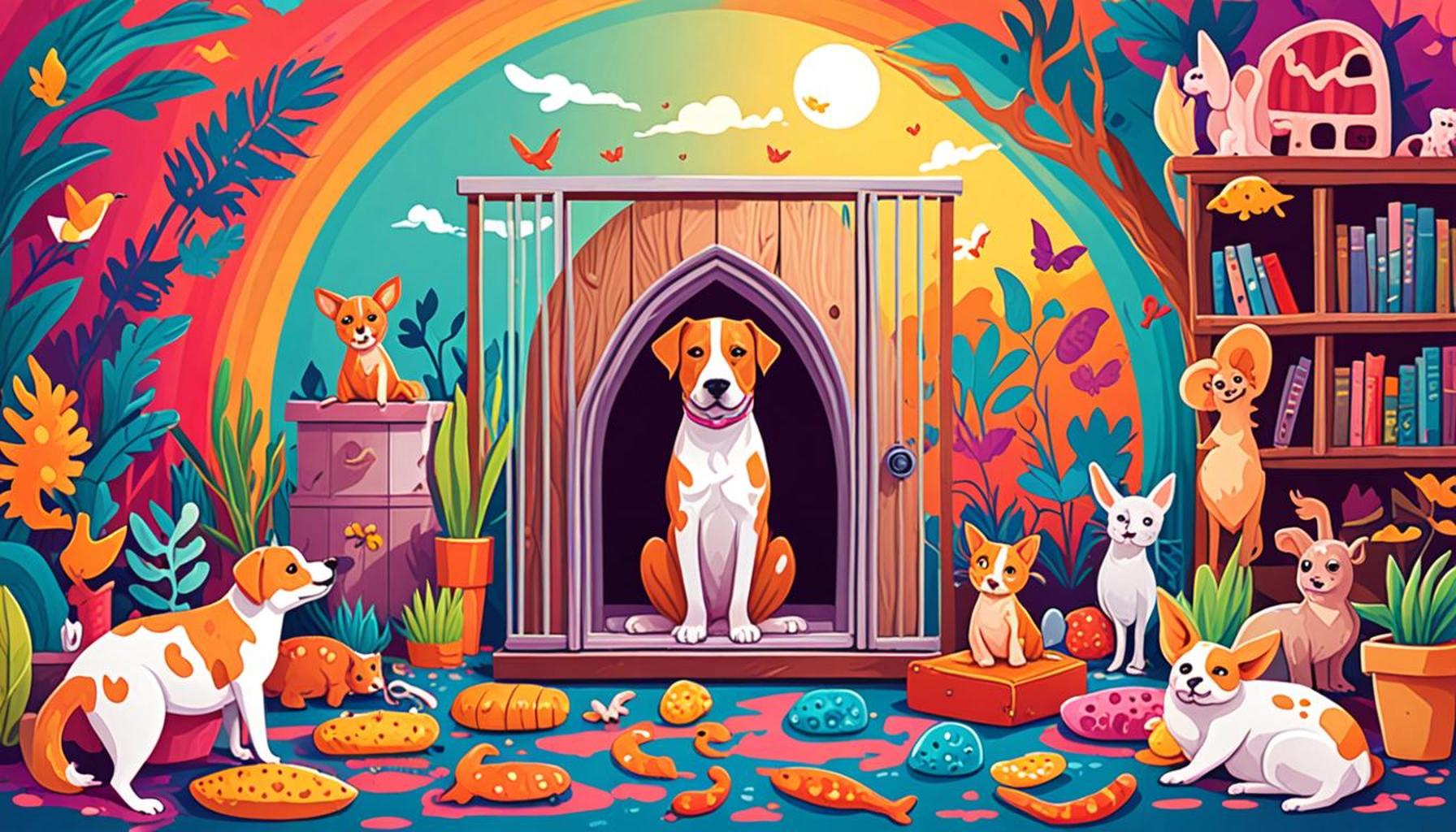The Role of Social Media in Pet Adoption

Unlocking Potential Through Connectivity
In the United States, the stark reality is that each year, millions of pets find themselves in animal shelters, waiting for the warmth of a loving home. With the advent of social media, the landscape of pet adoption has experienced a revolution, transforming the means by which shelters connect with prospective pet owners. The integration of technology into animal welfare is not just innovative but essential in bridging gaps between these vulnerable animals and compassionate adopters.
Why Social Media Matters
- Wide Reach: Platforms like Facebook, Instagram, and Twitter have democratized communication, allowing shelters to reach audiences far beyond their local communities. Distinct hashtags, targeted ads, and engaging posts can attract potential adopters from across the nation, significantly increasing the chances of finding homes for these pets.
- Engagement: Pet adoption posts often have the potential to go viral, as people share and comment on them, expanding their reach exponentially. For instance, a heartwarming video of an adoptable pet might touch thousands of hearts, prompting not just interest but also community support and volunteerism.
- Storytelling: The emotional weight of individual pet stories can significantly impact potential adopters’ decisions. Sharing a pet’s journey, including their hardships and triumphs, fosters empathy and a powerful emotional connection. This strategy has proved successful; many people adopt based on a compelling narrative rather than just an image or description.
According to a study conducted by the ASPCA, over 70% of shelters reported a noticeable increase in adoptions directly correlated with their social media campaigns. This digital approach is crucial not only for pairing pets with their future families but also for educating the public on responsible pet ownership, highlighting the importance of spaying and neutering, proper nutrition, and regular veterinary care.
Exploring the Impact
Expanding further, the effectiveness of social media campaigns can be quantified through various metrics, including engagement rates and the number of shares. Shelters have adopted techniques like organized adoption events promoted through live streams or interactive stories that allow pets to ‘present’ themselves to the audience. Major success stories illustrate the potential of these platforms; for example, a shelter in Texas used a series of themed photoshoots on Instagram that led to a dramatic increase in the number of adoptions during a summer campaign.
In conclusion, as we continue to explore the multifaceted role of social media in pet adoption, it becomes clear that these platforms offer an invaluable resource. By effectively harnessing social media, shelters can significantly bridge the gap between animals in need and those who are eager to provide them with a forever home. This vibrant connection not only saves lives but fosters a community of informed and engaged pet owners, ensuring a better life for both pets and their families.
DON’T MISS: Click here to learn more about pet nutrition

Connecting Hearts and Homes
In the digital age, social media has emerged as a cornerstone for modern communication, enabling individuals and organizations to share messages and stories instantly. This revolution has had a profound impact on pet adoption, with animal shelters and rescue organizations leveraging these platforms to enhance outreach and connect with prospective pet owners. Through engaging content, shelters can create compelling narratives around adoptable pets, thereby fostering emotional connections and increasing adoption rates.
The Mechanics of Social Media Campaigns
The strategies employed by shelters on social media hinge on a combination of creativity, technology, and data analysis. By utilizing various forms of media—such as images, videos, and live streams—these organizations can present their animals in the best light. Factors contributing to the success of these campaigns include:
- Targeted Advertising: Social media platforms offer advanced targeting tools that enable shelters to reach specific demographics. By tailoring ads to users based on their interests, location, and even behavior, shelters can connect with those more likely to consider adoption, ensuring their message reaches receptive audiences.
- Community Engagement: Interaction is a key aspect of social media. Shelters encourage followers to share posts, comment, and participate in discussions, creating a community around pet adoption. Engagement metrics, such as likes, shares, and comments, can help shelters assess the effectiveness of their campaigns and make necessary adjustments.
- Visual Storytelling: A simple photo of a pet often cannot convey the full story. By employing high-quality images or videos that showcase the personality and quirks of each animal, shelters can inspire adoption decisions based on emotional resonance. Pets that display playful behavior or endearing traits are more likely to attract attention and affection.
The effectiveness of these social media strategies is evident in statistics reported by various shelters. According to the Humane Society of the United States, approximately 92% of pet adopters claim that social media played a significant role in their decision to adopt. This underscores the power of digital platforms in shaping perceptions and driving potential adopters to action.
Additionally, shelters can harness social media analytics to refine their outreach initiatives continuously. By reviewing performance indicators, such as post reach and engagement, organizations can better understand which content resonates with their audience. This data-driven approach optimizes future campaigns and enhances the chances of finding homes for countless animals.
The Role of Community and Collaboration
Another noteworthy aspect of social media’s role in pet adoption is its ability to foster collaborations within communities. Shelters often partner with local businesses, influencers, and non-profit organizations to amplify their message. For example, a local pet supply store might feature adoptable pets on its social media pages, while influencers may share their experiences with shelter animals, reaching diverse audiences.
In conclusion, the role of social media in pet adoption cannot be overstated. By creating engaging content, fostering community interactions, and employing analytics-based strategies, shelters are not only increasing their reach but also transforming the lives of pets in need. The amalgamation of these tools symbolizes a broader shift in public consciousness toward understanding the importance of providing a loving home for every animal.
The Impact of Social Media on Pet Adoption Rates
Social media has transformed the landscape of pet adoption, introducing new ways to connect potential pet owners with their future furry companions. Platforms such as Facebook, Instagram, and Twitter provide organizations and shelters with a vast audience, allowing them to showcase adoptable animals in a visually engaging manner. These platforms enable shelters to share compelling stories and heartwarming images, which can help potential adopters feel a profound connection to the animals in need.In terms of reaching a broader audience, social media serves as an essential tool for viral campaigns. A single post can be shared thousands of times, creating a ripple effect that raises awareness about specific pets available for adoption. For instance, using the hashtag #AdoptDontShop encourages supporters to share their adoption stories, leading to increased visibility for animals that might otherwise go unnoticed. Additionally, social media facilitates community engagement, as local organizations can form alliances to cross-promote events and collaborate on initiatives that aim to boost pet adoption rates.Moreover, social media can significantly improve the success rates of adoption events. By promoting these events through engaging content, including live videos and countdown posts, shelters can attract more visitors. The excitement generated by social media can encourage attendees to adopt a pet on the spot, ultimately saving more lives.To illustrate, studies have found that shelters leveraging social media see an increase in their adoption rates by over 30%, showcasing its effectiveness. Alongside real-time interactions and endless posts, social media also provides a platform for educational content, informing potential adopters about responsible pet ownership, the importance of spaying and neutering, and the benefits of adopting rather than buying.Now, let’s delve deeper into how social media plays a crucial role in the pet adoption ecosystem through the advantages it offers.
| Advantages | Key Features |
|---|---|
| Wider Reach | Increased visibility of adoptable pets to a global audience |
| Community Engagement | Fosters a sense of community among animal lovers and potential adopters |
| Effective Storytelling | Utilizes emotional narratives to create connections and motivate adoptions |
Understanding the power of social media in pet adoption is essential for organizations and advocates alike. The ability to mobilize public sentiment and tap into the emotional aspect of pet ownership keeps the conversation going and increases the overall goal of finding homes for every loving pet in need.
DISCOVER MORE: Click here to learn about effective training methods
Influencing Adoption Trends and Changing Lives
Social media’s influence extends beyond merely connecting shelters with potential adopters. It actively shapes adoption trends and behaviors, leading to transformational outcomes for both animals and their future families. The ability to share experiences, stories, and even challenges encountered during the adoption process empowers new pet owners and informs wider audiences about pet needs and responsibilities.
Success Stories that Inspire
One powerful element of pet adoption on social media is the dissemination of success stories. Shelters frequently post updates celebrating recently adopted pets, showcasing their transition into loving homes. These heartwarming narratives, often featuring before-and-after photos and tales of companionship, resonate deeply with followers. For example, an uplifting post about a timid rescue dog blossoming into a playful family member not only touches hearts but influences others to consider adoption seriously.
In fact, a study published in the journal Animals revealed that sharing compelling pet adoption stories can increase the likelihood of pet adoptions by as much as 70%. The emotional impact created by these stories promotes empathy and drives awareness, compelling more people to reconsider adopting a pet rather than buying one from breeders or pet stores.
Using Hashtags to Amplify Messages
An essential tool in the arsenal of social media is the hashtag—a simple yet potent way to raise visibility. Shelters employ popular hashtags such as #AdoptDontShop or #RescuePets to join larger conversations and expand their messages beyond their immediate followers. By tapping into trending topics, they can connect with broader audiences interested in animal welfare and adoption.
Moreover, during special occasions like National Adopt a Shelter Pet Day, organizations utilize targeted hashtags to foster a sense of unity among adopters and advocates nationwide. This not only enhances awareness but also creates a wave of solidarity that celebrates the act of adopting a pet. Social media users are more likely to join these collective movements, sharing their own stories and encouraging their friends to consider adoption as a viable option.
Engagement through Challenges and Campaigns
Social media challenges and fundraising campaigns have also become quintessential in driving adoption initiatives. Shelters are increasingly initiating creative challenges—such as the “30-Day Pet Photo Challenge”—where followers post pictures with their adopted pets, tagging the shelter to create a ripple effect of awareness. Such engagement can lead to a surge in interest in adoptable animals, thus offering them a lifeline to find forever homes.
The financial aspect cannot be overlooked either. Crowdfunding platforms, often promoted via social media, allow shelters to raise funds for medical treatments, food supplies, and community outreach programs. A successful fundraiser can bolster adoption rates, as shelters use the raised funds to care for animals, enhancing their chances of being adopted. For instance, social campaigns supporting heartworm treatments have led to a notable decrease in euthanasia rates among affected dogs across several states.
Real-Time Adoption Events
Finally, the rise of live streaming on platforms like Facebook and Instagram has introduced real-time pet adoption events that bring potential adopters face to face with animals. Live streams allow shelters to showcase pets, interact with viewers, and answer questions on the spot, resulting in a more dynamic and personal experience compared to traditional static posts. In fact, shelters that embraced live adoption events reported seeing adoption rates rise significantly, as viewers develop instant connections with pets they wouldn’t have otherwise considered.
Through these multimodal approaches, social media not only plays a critical role in finding homes for pets but also educates the public about the joys and responsibilities of pet ownership, creating lasting bonds between furry friends and their new families.
DIVE DEEPER: Click here to learn more
Conclusion: A Transformative Force for Pet Adoption
As we reflect on the vital role of social media in pet adoption, it’s clear that these digital platforms have revolutionized the way animal welfare organizations connect with prospective pet owners. By harnessing the emotional power of success stories and utilizing engaging hashtags, shelters effectively amplify their messages, broadening their reach. The communal spirit fostered during events like National Adopt a Shelter Pet Day not only celebrates the joys of adoption but also cultivates a social movement, encouraging individuals to reconsider their choices in pet ownership.
Moreover, the innovative approaches such as real-time live adoption events create immersive experiences that allow potential adopters to form instant connections with pets they might have overlooked otherwise. This personal interaction significantly enhances the chances of adoption, proving that social media is more than just a communication tool—it’s a means of transforming lives on both sides of the leash.
With studies suggesting that social media engagement can boost adoption rates by as much as 70%, the data speaks for itself. The power of storytelling, coupled with the ability to connect and mobilize communities for a common cause, underscores the importance of these platforms in shaping adoption trends. As we move forward, let us continue to leverage social media not only to promote pet adoption but also to enhance awareness around responsible pet ownership, ultimately contributing to a future where every animal finds a loving home.


